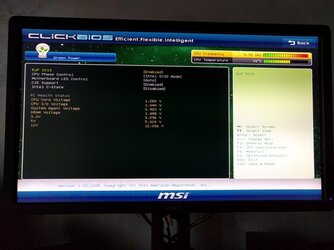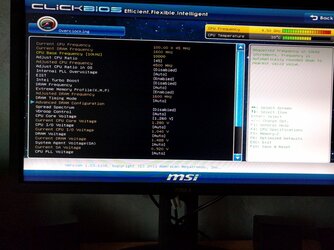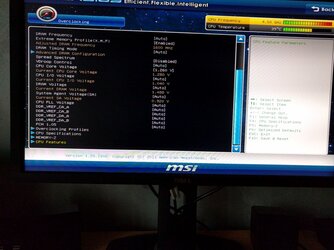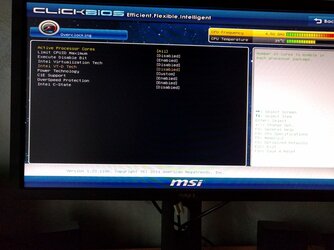- Joined
- Jan 7, 2017
I did a working OC a while ago, now I'm a bit rusty on the matter because in the past months I kept my cpu @stock due to high seasonal temperatures.
Now I want to try again some OC on my 2500K. For the sake of completeness, I have a MSI P67 GD65 board and 2 sticks each of 8 GB G. Skill Ripjaws 1600 MHz ram. The cooler is the mighty Noctua NH-D14.
It seems I'm able to reach 4.5 GHz with 1.260 v-core.
The problem is that, even having all power efficiency features enabled (C1E, C-states, Eup 2013, speedstepping), when idling the multiplier drops from 45x to 16x but the vcore does not!
It drops just a little bit from 1.260, something like a mere 1.25 V and nothing more.
While, without OC, with multiplier dropping to 16x, the vcore drops to less than 1 V in total!
Why is this happening?
Among the other OC settings in my BIOS I currently have:
- spread spectrum: off
- v-droop: auto (low v-droop is the only other possible choice, but it dumps a LOT more voltage under load, so I prefer avoiding it)
- xmp enabled
For the CPU OC I'm manually setting the v-core and changing "ratio limit" of each core to 45 from the BIOS.
I've also tried setting turbo boost off and changing the "global" cpu ratio to 45 but nothing changes.
In both cases, another weird thing is that cpu-z reads more than 1.260 v-core during normal usage.
Under stress test, it even jumps to 1.288 V!
Any help is greatly appreciated!
Now I want to try again some OC on my 2500K. For the sake of completeness, I have a MSI P67 GD65 board and 2 sticks each of 8 GB G. Skill Ripjaws 1600 MHz ram. The cooler is the mighty Noctua NH-D14.
It seems I'm able to reach 4.5 GHz with 1.260 v-core.
The problem is that, even having all power efficiency features enabled (C1E, C-states, Eup 2013, speedstepping), when idling the multiplier drops from 45x to 16x but the vcore does not!
It drops just a little bit from 1.260, something like a mere 1.25 V and nothing more.
While, without OC, with multiplier dropping to 16x, the vcore drops to less than 1 V in total!
Why is this happening?
Among the other OC settings in my BIOS I currently have:
- spread spectrum: off
- v-droop: auto (low v-droop is the only other possible choice, but it dumps a LOT more voltage under load, so I prefer avoiding it)
- xmp enabled
For the CPU OC I'm manually setting the v-core and changing "ratio limit" of each core to 45 from the BIOS.
I've also tried setting turbo boost off and changing the "global" cpu ratio to 45 but nothing changes.
In both cases, another weird thing is that cpu-z reads more than 1.260 v-core during normal usage.
Under stress test, it even jumps to 1.288 V!
Any help is greatly appreciated!
Last edited:



